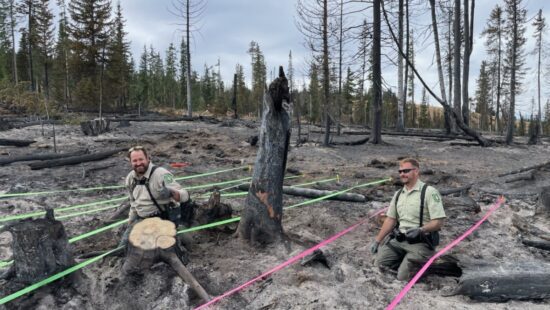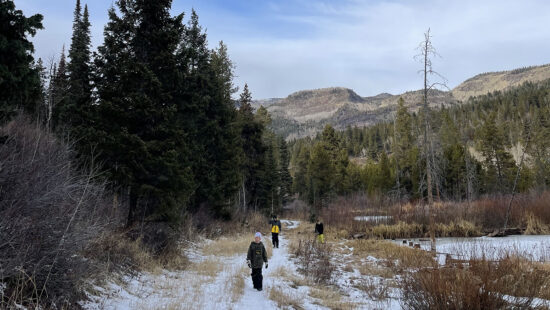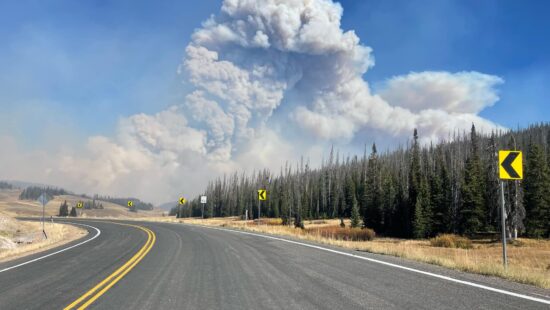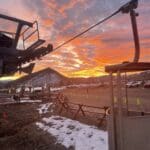News
Controlled burns in Utah national forests look to improve health & safety
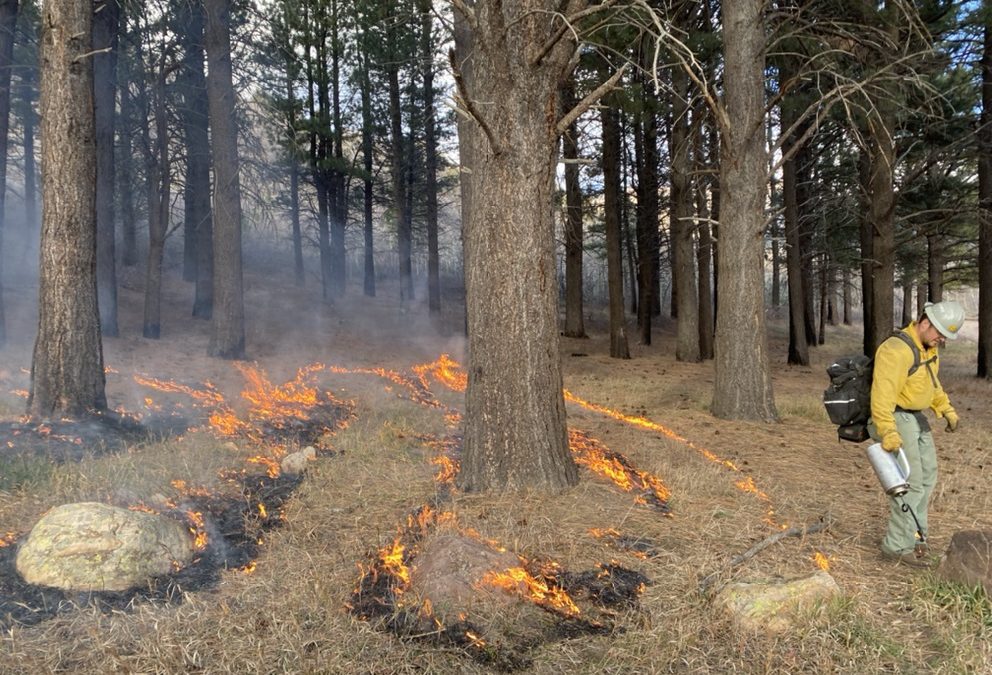
Controlled burns in the Heber-Kamas Forest Service district this month, as part of the Ponderosa Restoration Project. Photo: Utah Fire Info
SALT LAKE CITY — For decades, the U.S. Forest Service’s practice of putting out wildfires was a huge success. But the policy backfired, setting the stage for the massive destructive wildfires that have flared with increasing regularity across the West.
While putting out fires remains a priority, deliberately setting them is becoming more common, especially in Utah, as a more cost-effective and ecologically sound strategy for fixing forest health, the Salt Lake Tribune reported.
The pitfalls of fire suppression are evident across Monroe Mountain in central Utah. The plateau’s historically abundant aspen stands are disappearing under thickets of fir and other conifers that have long impeded fresh aspen growth that should be succeeding the aging trees, but aren’t.
In the hopes of restoring the historic role of fire, at least three Utah national forests plan to sharply expand the use of “prescribed fire” to nurse sickly forests back to health.
Like much of the West’s wooded terrain, large parts of the Fishlake National Forest are ecologically wired to burn from time to time. To thrive, aspen groves need to get wiped out from time to time, according to Richfield District Ranger Jason Kling of the Fishlake National Forest.
“That keeps the fuels in check, not allowing the overgrowth to occur, keeping the landscape open, allowing sunlight to reach the forest floor,” Kling says while touring places on the mountain treated with prescribed fire in the last few years. ”There’s a lot of benefits.”
A backroad crossing the mountainside overlooking the town of Koosharem borders a burn area that is now recovering. A few years ago, crews used the road as a firebreak when they torched the forest on one side. On the untreated uphill side, the forest is choked with small-diameter fir and aging aspen that are probably on their last legs.
On the downhill side, by contrast, there are no living mature trees, but it buzzes with life. The plants are mostly shrubs and young aspen, some about 8 feet high, tall enough to avoid being grazed to stubs by the cows and big game that love aspen leaves. Tens of thousands of aspen shoots per acre have “suckered” up from an ancient root system that connects all the aspen here. These genetically identical trees are essentially all one organism.
Since 2016, the Fishlake has been setting fire to patches of Monroe Mountain, sometimes dropping fuel-filled “polymer spherical devices,” or PSDs, from helicopters to ignite broad areas.
“We’re trying to insert the fire back at the right scale and right time,” says Forest Supervisor Mike Elson. These treatments are carefully managed and timed to minimize the chances controlled burn turns into a wildfire or fills communities with smoke. The wind and temperatures have to be just right.
Three of Utah’s five national forests are now developing plans for conducting controlled burns on all their land where prescribed fire would be appropriate. Fishlake, Dixie and other national forests in south-central Utah span a total of 5 million acres, mostly on high-elevation plateaus and mountains jutting above irrigated valleys and desert.
Fires reduce fuel loads and prevent bigger fires. Forest Service officials already deploy prescribed fire, whether naturally ignited or deliberately set, in the West’s national forests. But this piecemeal approach has not kept pace with the need. In short, far more fuels are added to the West’s overgrown forests each year than are being cleared out through unplanned fires and mechanical treatments, known as “thinning.”
On tap is a more comprehensive approach toward prescribed fire. In the meantime, however, the Forest Service and its state partners are struggling with massive wildfires propelled by climate change and extreme weather events, laying waste to both forests and communities.
This high-risk situation is a consequence in part of excluding fire for decades, leading to what the Forest Service calls “uncharacteristic” wildfire, or what others prefer to call “catastrophic.” Many rural communities would like to see a return to commercial timber harvests that were common before the 1990s. While logging might generate some timber jobs, it won’t solve the forests’ ecological problems, experts say.
“Fire, in general, has been on this landscape for millennia and it’ll continue to be on the landscape. Because of fire suppression, we’ve altered what that looks like,” said Ben Newburn, a fire management officer with the Forest Service’s Intermountain Region office in Ogden. ”Through prescribed fire, we can try to get back to fire regimes in the landscape, in a more historically representative way. And it is one of the more cost-effective methods of treating fuels. We can treat much broader landscapes and we can do it in a way that mimics the natural process.”
Of the three Utah forests developing forest-wide burn plans, the Fishlake was the first to complete its environmental assessment, posted on Oct. 20. Elson’s hope is to cut through the bureaucracy by getting the analysis done all at once, so specific projects are ready to roll when the weather conditions are right and the resources are available.
“Rather than doing the same thing over and over again at a really small scale,” Elson asks, “why don’t we do it at a scale that then allows us to actually focus on getting the work done on the ground as opposed to just focusing on doing paperwork and meetings?”
The Fishlake plans to burn up to 40,000 acres a year for 25 years, treating 1 million of that forest’s 1.5 million acres with prescribed fire and mechanical work. That would represent a 10-fold increase in the Fishlake’s current pace of deliberate burning. The public is invited to submit comments through Nov. 19, either by mail or online.
Other Utah forests’ targets are even more ambitious. The Manti-La Sal National Forest plans to treat up to 48,000 acres a year across 1.2 million acres. This 1.4-million-acre forest covers the Wasatch Plateau east of Ephraim and the Abajo and La Sal ranges near Moab. That proposal does not consider using prescribed fire on certain sensitive lands, including Bears Ears National Monument, designated wilderness, alpine areas and sage grouse habitat.
In southern Utah, the Dixie National Forest aims to treat up to 52,000 acres a year across 1.8 million of its 2 million acres. The public is invited to comment on Dixie’s scoping notice through Nov. 17.
“What we don’t want is all 1 million acres to burn one hot summer. We want to burn it in manageable chunks that don’t devastate whole watersheds so that you have gulleys washing out and cities losing their water supply,” Elson says. “So it’s really a balance that we’re trying to find in terms of how big and when and under what conditions.”
Acreage targets are not arbitrary but are based on historic burn intervals recorded in the growth ring of old trees.
“In some areas, it might be every 10 years, some areas might be every 100 years,” Elson says. “You add all that up and you do the math, we need to be treating between 40,000 and 120,00 acres every year to mimic that natural level of disturbance.”
To illustrate the point, Kling points to data extracted from a ponderosa pine that started growing in 1583. Its rings reveal charring, evidence of wildfire, in eight instances through 1788. On average, about 24 years passed between burns over the tree’s first 200 years of life, but then the rings showed no evidence of fire for the next 233 years, a period coinciding with the arrival of explorers and settlers in the West.
“Fire was much more frequent on the landscape, pre-European settlement versus post-European settlement,” says Kling.
A warming and drying climate has further primed Western forests for megafires that are driven by extreme weather events, putting communities at risk and leaving landscapes charred beyond recognition. Meanwhile, beetle infestations, abetted by warm winters, have killed large swaths of forests across Utah, notably in the western Uinta Mountains and the Wasatch and Markagunt plateaus.
Many academic and agency ecologists see the deliberate reintroduction of fire as a viable pathway out of this mess.
“It creates great habitat, keeps the carbon in the forest,” said ecologist Chad Hanson of the John Muir Project. While he endorses prescribed fire, he prefers to see the Forest Service harness naturally ignited fires, as opposed to setting them off artificially, especially outside the normal fire season.
“You really don’t get the natural ecological mix of conditions and natural heterogeneity with a human-set prescribe power as you do with a prescribed natural fire,” says Hanson, co-author of a book titled “Nature’s Phoenix: The ecological importance of mixed severity fires.” “And so it doesn’t really mimic the same thing. That doesn’t mean there’s not a time and place for human-set prescribed fire.”
Prescribed fire has plenty of detractors who see it as a risky endeavor that can waste timber resources, further harm landscapes and habitat, and result in serious property damage.
“The Forest Service has thousands of examples of the complete elimination of major habitat types through site conversion due to high intensity/high severity wildfires and escaped prescribed fires creating moonscapes where biodiversity once obtained,” wrote wildfire and forestry consultant Frank Carroll in an email commenting on the Fishlake burn plan. “Fire is an equal opportunity tool, often leaving smoke and ruin where life flourished before.”
He dismissed Fishlake’s environmental assessment as “hubris and fantasy” and “insulting” for failing to fully analyze impacts of fire, particularly in areas recommended for wilderness designation.
“The Forest Service has wantonly destroyed thousands of very old trees and otherwise changed or damaged wilderness and wild areas in ways we are just beginning to understand,” Carroll wrote. “What are the values we are trying to protect in wilderness? Solitude? Beauty? Views?”
Carroll spent 31 years with the Forest Service, but his thinking has diverged sharply from the pro-burn philosophy taking shape under the agency’s leadership. Forest Service Chief Randy Moore has publicly declared a goal of quadrupling the amount of land treated by prescribed fire.
Many fire ecologists agree prescribed fire, both human-set and naturally occurring, should be deployed if the West’s dense forests are to ever regain their health. Mechanical thinning is not only cost-prohibitive, but it won’t get the job done, according to Matthew Hurteau, an ecology professor at the University of New Mexico. Mechanical treatments can cost at least $1,000 an acre versus less than $100 for prescribed fire.
“Prescribed burning is a way to manage, what in fire ecology we call the surface fuels. It’s a really important tool,” Hurteau says. “You can reduce tree density by thinning the forest, but if you don’t deal with the buildup of dead plant material on the forest floor through prescribed burning or some other means, you still have quite a bit of fire hazard associated with that patch of forest.”
He and others want to see the Forest Service go even further, and “manage” naturally ignited fires in ways that improve forest health, a position Carroll thoroughly rejects. Hanson and Hurteau both argue natural fire can do a lot of good, as long as it doesn’t put homes and infrastructure at risk.
But such initiatives have courted controversy. In 2018, for example, Utah’s Uinta-Wasatch-Cache National Forest chose such a response to two lightning-caused fires; the result ignited a political firestorm of sorts. Under the watch of forest officials, the Pole Creek and Bald Mountain fires had burned harmlessly on Mount Nebo for several days before a wind event whipped them into a major fire that scorched about 120,000 acres and nearly burned into hillside subdivisions. No homes were lost, but millions were spent fighting the fire and the burn scar unleashed severe mudflows.
Carroll blamed that outcome on the Forest Service and he is now acting as a consultant for several property owners seeking compensation for alleged losses stemming from the Pole Creek Fire, which he pegs at $200 million. Utah political leaders, including Gov. Spencer Cox, also blasted the agency for not putting out those two fires when they were small.
The political fallout was not lost on the Forest Service. In the face of last summer’s devastating West Coast fires, Moore imposed a moratorium on managing natural fires in favor of immediate suppression.
That move disappointed Hurteau and 40 other ecologists who signed a letter to Moore, asking him to reconsider.
“Restoring fire to our forests through prescribed and managed wildfires can lead to long-term reductions in suppression costs and the societal and environmental impacts of severe wildfire seasons,” the Aug. 10 letter states. “We have far too much fuel buildup stored in most of our forested landscapes, and when combined with extreme fire weather, continued fire exclusion puts firefighters, communities, and historical ecosystems at risk.”
Still prescribed fire remains in play, and Forest Service crews were back in the Fishlake last week with drip torches and incendiary PSDs. Those operations charred 250 acres at Manning Reservoir and Moroni Peak.















